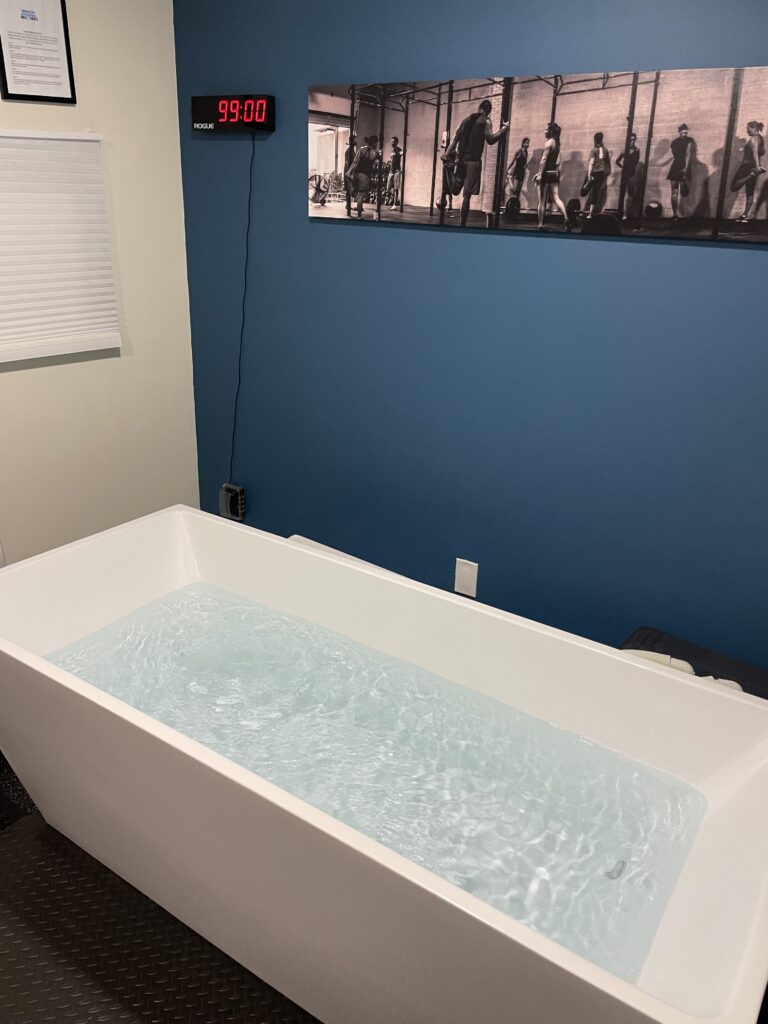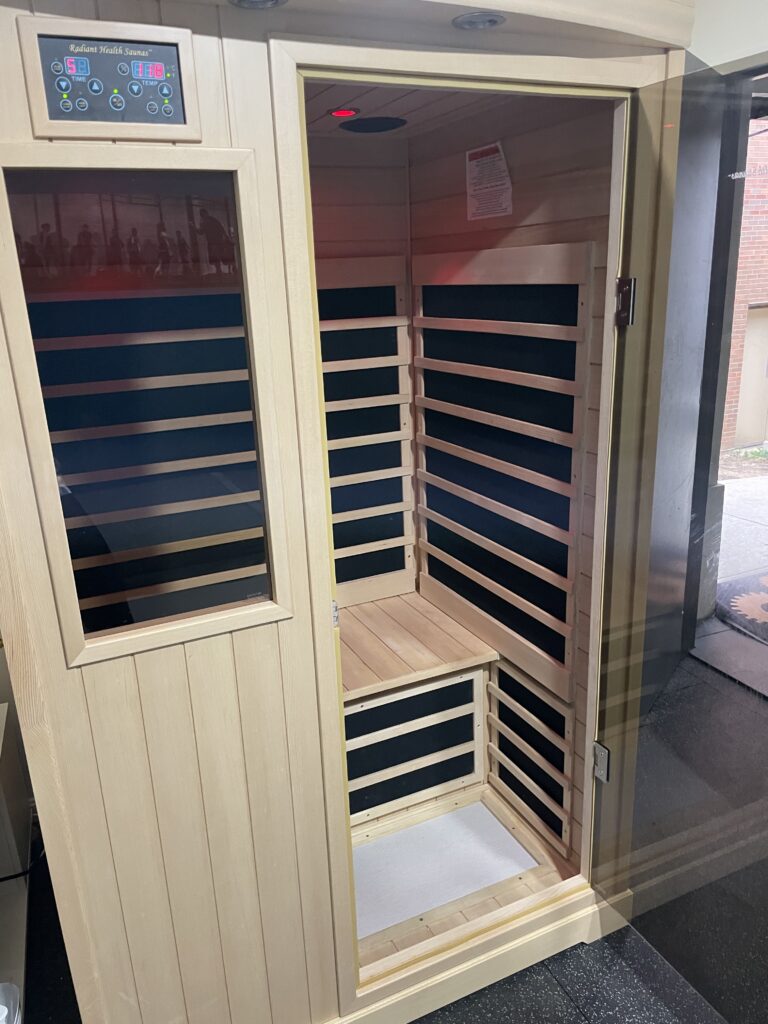Cold therapy, or cryotherapy, effectively mitigates inflammation and reduces muscle soreness, thereby curtailing downtime and expediting the return to peak training levels. Conversely, heat therapy promotes muscle relaxation and increases circulation, which facilitates the healing of tissues damaged during rigorous CrossFit training. Mastery of these therapeutic interventions requires understanding their mechanisms of action, optimal timing, and methods of application. For the Crossfit enthusiast seeking to minimize injury risk and maximize gains, the strategic use of cold and heat therapy is not merely advisable; it is essential. Tailoring these treatments to individual recovery needs can yield substantial benefits, contributing to a sustainable and effective fitness regimen.
Key Takeaways
- Proper rest and rehabilitation enhance athletic performance
- Cold therapy reduces inflammation and muscle soreness
- Heat therapy promotes muscle relaxation and increases blood flow
- Tailoring treatments to individual recovery needs yields substantial benefits
Understanding CrossFit Recovery
CrossFit, with its high-intensity functional movements, demands that athletes commit to structured recovery strategies to prevent injury and improve strength and conditioning. Heat and cold therapy emerge as critical components in this recuperative process, offering unique benefits that are scientifically supported. Cold therapy reduces inflammation and mitigates pain post-workout, while heat therapy facilitates muscle relaxation and increases blood flow for better nutrient delivery and waste removal. Mastery of these techniques can lead to optimized recovery, allowing athletes to return to training with greater efficiency and reduced risk of overuse injuries.
Basics of Thermotherapy
Thermotherapy, encompassing both cold and heat treatments, plays a crucial role in CrossFit athletes’ recovery by modulating tissue temperature to aid in pain relief and muscle healing. The utilization of these modalities is grounded in the principles of morphology and local points of interest within the muscle tissues and joints, targeting inflammation and promoting blood flow.
| Treatment | Purpose |
|---|---|
| Cold Therapy | Reduces inflammation and numbs sore tissues. |
| Heat Therapy | Enhances circulation and relaxes tight muscles. |
| Contrast Therapy | Alternates between cold and heat to combine benefits. |
Athletes are advised to apply these treatments in a prescribed manner, focusing on industry measurements of time and temperature to maximize the benefits of thermotherapy without causing tissue damage.
Cold Therapy Explained

Cold therapy, often referred to as cryotherapy, involves the application of cold temperatures to reduce inflammation and numb discomfort in muscles after Crossfit workouts. It has become a staple in athletic recovery protocols due to its effectiveness in managing the acute phase of injury by constricting blood vessels and decreasing metabolic activity. Here’s how cold therapy can benefit Crossfit athletes:
- Diminishes muscle inflammation and pain post-exercise.
- Accelerates the recovery process, allowing for more frequent training sessions.
- Reduces muscle spasms and helps in preventing delayed onset muscle soreness (DOMS).
- Can be applied through various methods, including ice packs, cold water immersion, and cryotherapy chambers, catering to individual preferences and specific recovery needs.
Heat Therapy Benefits
Equally important in the realm of athletic recovery, heat therapy frequently assists Crossfit athletes by dilating blood vessels, which enhances the flow of oxygen and nutrients to muscles, thereby accelerating the healing process post-training. The application of heat to affected areas reduces joint stiffness, muscle spasms, and pain, allowing for a more comfortable post-workout period. This modality not only promotes flexibility but also facilitates stretching, which is crucial for maintaining a full range of motion and preventing injury. Furthermore, heat therapy can aid in the reduction of lactic acid build-up, a common byproduct of intense exercise that can contribute to muscle soreness. By incorporating regular heat therapy sessions, Crossfit enthusiasts can ensure a more resilient and responsive body, ready for the demands of high-intensity workouts.
Application of Ice Packs
The strategic placement of ice packs on overworked muscles is a crucial aspect of Crossfit recovery, serving to constrict blood vessels and reduce inflammation. The application of ice is guided by several key principles:
- Duration: Apply ice for 15-20 minutes at a time to avoid skin damage.
- Frequency: Repeat every two to three hours during the initial 24-48 hours post-workout.
- Method: Wrap the ice pack in a thin towel to prevent frostbite.
- Coverage: Ensure the ice pack covers the entire affected area for uniform cooling.
Employing these steps will help athletes manage pain, control swelling, and enhance their overall recovery process.
Heat Compress Techniques
Transitioning from the application of ice, the use of heat compresses offers a complementary approach in Crossfit recovery, promoting blood flow to soothe and relax tight muscles. Heat therapy, applied through various techniques such as heated gel packs, warm towels, or heating pads, serves as a critical modality for enhancing muscle elasticity and reducing stiffness post-workout. To effectively utilize heat compresses, athletes should adhere to a duration of 15-20 minutes, ensuring the temperature is warm, not hot, to prevent burns. It’s crucial to apply heat to muscles that are tight or sore after they’ve returned to baseline temperature following a cool-down phase. This practice encourages optimal healing by augmenting the natural repair mechanisms of the body, thus contributing to a holistic recovery process.
Timing Cold Treatments
To effectively integrate cold therapy, one must adhere to a meticulously crafted schedule that maximizes the therapeutic benefits while minimizing potential drawbacks.
- Immediately Post-Workout: Apply cold therapy within 20 minutes to reduce inflammation and muscle soreness.
- Duration: Limit cold exposure to 15-20 minutes to prevent skin damage and frostbite.
- Frequency: Repeat cold treatments every two hours on the first day if necessary.
- Subsequent Days: Use cold therapy on following days only if inflammation persists.
These guidelines serve as a strategic framework, ensuring cold treatments contribute positively to the meticulous recovery regimen of a Crossfit athlete.
Scheduling Heat Applications
Heat applications should be scheduled post-workout to alleviate muscle stiffness and enhance blood flow, contributing to the healing process. A practical approach involves a 15-20 minute application of heat using products designed for therapeutic warmth such as heating pads, wraps, or moist heat sources. Timing is critical; heat should be applied when muscles are cool but not immediately following cold therapy to avoid thermal shock. Consistency in this practice can lead to improved flexibility and a reduction in next-day soreness, facilitating a more efficient recovery phase for Crossfit athletes.
Precautions for Temperature Therapy
We must now consider the necessary precautions when utilizing temperature therapy in Crossfit recovery to ensure safety and effectiveness.
- Duration: Limit cold therapy to 15-20 minutes at a time to prevent skin damage and frostbite.
- Skin Protection: Always use a barrier, such as a towel or cloth, between the ice or heat source and the skin to reduce the risk of burns.
- Frequency: Avoid excessive use; allow time for the body to return to normal temperature before repeating applications.
- Medical Conditions: Consult with a healthcare professional if you have conditions like hypertension, diabetes, or heart disease, as temperature therapy could exacerbate certain medical issues.
Adhering to these guidelines can help maximize the benefits while minimizing risks.
Combining Heat and Cold
Initially, cold therapy reduces inflammation and numbs sore muscles, acting as a ‘local anesthetic’ and slowing down nerve impulses, which can interrupt the pain-spasm reaction between nerves. Following this, heat therapy assists by dilating blood vessels, enhancing circulation, and promoting muscle relaxation. This transition from vasoconstriction to vasodilation helps flush out metabolic waste accumulated during intense workouts.
For effective recovery, athletes might start with cold therapy immediately after a workout, then later transition to heat therapy. The precise timing can vary based on individual needs and specific CrossFit routines but ensuring a gap between the therapies to allow physiological normalization is critical.
Recovery Equipment Brands

In the realm of CrossFit recovery, prominent brands such as Theragun and Hyperice specialize in providing high-quality equipment designed for both cold and heat therapies. These brands have become synonymous with recovery in elite athletic circles, offering products that enhance performance through innovative technology. For athletes committed to their fitness regime, the following equipment brands are noteworthy:
- Theragun: Offers percussive massage devices for deep muscle treatment.
- Hyperice: Known for its vibrating foam rollers and ice compression devices.
- Plunge: Specializes in infrared sauna and cold plunge products.
- Sunbeam: Provides heating pads that cater to muscle relaxation and pain relief.
Each brand presents a unique value proposition, with products engineered to meet the rigorous demands of CrossFit enthusiasts seeking efficient and effective recovery solutions.
Local Recovery Facilities
Industry Athletics caters to Baltimore area CrossFit athletes by offering specialized recovery services that incorporate both cold and heat therapy to aid in muscle recuperation and performance enhancement. These establishments are equipped with industry-specific amenities such as cryotherapy chambers, infrared saunas, and contrast water therapy pools. Their services are designed to reduce inflammation, expedite healing, and improve circulation, providing a pragmatic approach to post-workout recovery.
Practitioners in these environments are versed in morphological assessments, tailoring interventions to individual needs. By integrating morphology with thermal treatments, they enhance the athlete’s recovery trajectory. Emphasizing practical outcomes, these facilities embody a prescriptive ethos, ensuring that each athlete’s recovery protocol aligns with unique physiological demands and training schedules, thereby optimizing the recuperative process.
Frequently Asked Questions
What Are the Long-Term Effects of Consistent Cold and Heat Therapy on an Athlete’s Performance?
Consistent thermal therapy may enhance long-term athletic performance by promoting recovery, reducing injury risk, and improving muscular function. However, individual responses can vary based on physiology and therapy application.
Can Cold and Heat Therapy Influence Sleep Patterns and Quality in Crossfit Athletes?
Cold and heat therapy may positively affect sleep quality by promoting relaxation and muscle recovery, potentially leading to improved rest patterns for athletes engaged in rigorous physical activities such as CrossFit.
Are There Any Dietary Considerations That Should Be Taken Into Account When Utilizing Temperature Therapy for Recovery?
Dietary considerations are vital for optimal recovery, with emphasis on anti-inflammatory foods and adequate hydration to support the body’s response to thermal stress during temperature-based therapy regimens.
How Does the Body’s Adaptation to Regular Cold and Heat Treatments Affect the Perceived Level of Discomfort During the Therapy?
Regular exposure to cold and heat treatments typically results in increased tolerance, leading to a decrease in perceived discomfort during such therapies over time. This adaptation can enhance recovery processes.
What Is the Impact of Cold and Heat Therapy on an Athlete’s Psychological Well-Being and Motivation?
Cold and heat therapy can significantly enhance an athlete’s psychological state, bolstering well-being and increasing motivation, essential for sustained high performance and successful recovery strategies.
Conclusion
The strategic application of cold and heat therapies plays a crucial role in enhancing Crossfit recovery. These modalities, grounded in thermotherapy principles, offer complementary benefits—cold therapy for inflammation control and heat therapy for muscle relaxation and blood flow enhancement. Their judicious use, when aligned with recommended safety protocols, can optimize recovery, augment performance, and mitigate injury risks, underscoring the importance of these treatments in the regimen of Crossfit athletes.